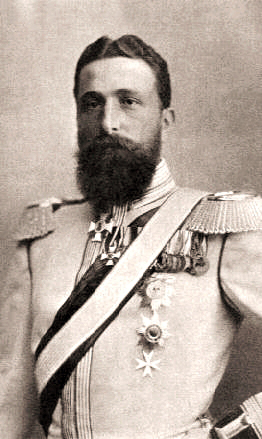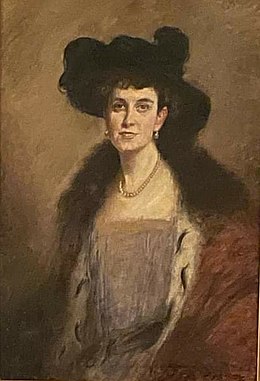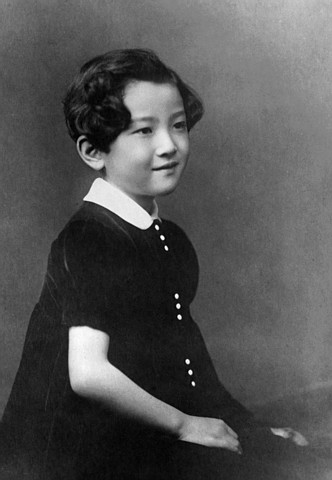© Unofficial Royalty 2023

Jane Seymour, Queen of England, Credit – Wikipedia
October 24, 1503 – Birth of Isabel of Portugal, Queen of Spain, Holy Roman Empress, wife of King Carlos I of Spain (Charles V, Holy Roman Emperor), in Lisbon, Portugal
The daughter of Manuel I, King of Portugal and his second wife Infanta Maria of Aragon, Isabella was the wife of her first cousin Charles V, Holy Roman Emperor who was also King of Spain, Archduke of Austria, Lord of the Netherlands, Duke of Burgundy, among many other titles. Charles and Isabella had five children but only three survived to adulthood. Their son Felipe would become King of Spain, King of Portugal, King of Naples and Sicily, Duke of Milan, Lord of the Seventeen Provinces of the Netherlands, and jure uxoris (by right of his wife) King of England and Ireland during his marriage to his second wife Queen Mary I of England from 1554 until Mary’s death in 1558. In 1539, during the third month of Isabella’s seventh pregnancy, she developed a fever causing her to miscarry. The fever caused her condition to worsen and Isabella died two weeks later in Toledo, Spain, on May 1, 1539, aged thirty-five. Charles never recovered from her death, dressed in black for the rest of his life, and despite being only thirty-nine, never remarried.
Unofficial Royalty: Isabel of Portugal, Queen of Spain, Holy Roman Empress
October 24, 1537 – Death of Jane Seymour, Queen of England, third wife of King Henry VIII of England, from childbirth complications at Hampton Court Palace in Richmond, England; buried at St. George’s Chapel, Windsor Castle in Windsor, England
On May 30, 1536, King Henry VIII was married to Jane Seymour, his third wife, in a private ceremony held in the Queen’s Closet at Whitehall Palace. On October 12, 1537, Jane gave birth to Henry VIII’s long-awaited male heir. Jane’s labor had been long, two days and three nights. Three days later, the baby was christened Edward after Edward the Confessor. On October 17, 1537, Jane’s condition deteriorated and she was given the last rites. She died on October 24, 1537, most likely from puerperal fever or childbed fever, a bacterial infection.
Unofficial Royalty: Jane Seymour, Queen of England
October 24, 1723 – Death of Praskovia Feodorovna Saltykova, Tsaritsa of All Russia, wife of Ivan V, Tsar of All Russia, in St. Petersburg, Russia; buried at the Alexander Nevsky Monastery in St. Petersburg, Russia in the crypt of the Annunciation Church
Praskovia Feodorovna Saltykova was the wife of Ivan V, Tsar of All Russia and the mother of Anna I, Empress of All Russia. Ivan V was physically and mentally disabled and co-reigned with his younger half-brother Peter I (the Great), Emperor of All Russia. Praskovia and Ivan had five daughters. Ivan died in 1696 at the age of 29. Praskovia had great respect for her brother-in-law Peter I and often served as the first lady, welcoming visitors to the Russian court. She understood the need for the changes Peter was making in Russia, raised her daughters, and held her court in a modern Western manner, which made her well-regarded by Peter. Praskovia’s health began to suffer towards the end of her life and she suffered from several ailments. She died the day after her 59th birthday.
Unofficial Royalty: Praskovia Feodorovna Saltykova, Tsaritsa of All Russia
October 24, 1829 – Death of Luise of Hesse-Darmstadt, Grand Duchess of Hesse and by Rhine, wife of Grand Duke Ludwig I of Hesse and by Rhine, at the summer residence Fürstenlager in Auerbach now in Hesse, Germany; buried in the Darmstadt Stadtkirche until 1910, when her remains were moved to the Altes Mausoleum in the Rosenhöhe in Darmstadt
In 1777, Luise married her first cousin, the future Grand Duke Ludwig I of Hesse and by Rhine. The couple had six children. Luise’s husband Ludwig succeeded his father in April 1790 as Ludwig X, Landgrave of Hesse-Darmstadt. After the fall of the Holy Roman Empire, Hesse-Darmstadt was raised to the Grand Duchy of Hesse, with Ludwig becoming its first Grand Duke, Ludwig I. In 1816, at the Congress of Vienna, he was forced to cede his Westphalian territories, but in return was given the Rheinhessen region which included the city of Mainz. It was then, that the Grand Duchy of Hesse became the Grand Duchy of Hesse and by Rhine. Luise died at her summer residence at the age of 68.
Unofficial Royalty: Luise of Hesse-Darmstadt, Grand Duchess of Hesse and by Rhine
October 24, 1887 – Birth of Victoria Eugénie of Battenberg, Queen of Spain, wife of King Alfonso XIII of Spain and granddaughter of Queen Victoria, at Balmoral Castle in Scotland
Full name: Victoria Eugénie Julia Ena
Known as Queen Ena of Spain, she was the daughter of Princess Beatrice of the United Kingdom and Prince Henry of Battenberg. The current Spanish Royal Family are her descendants. In 1906, Ena married King Alfonso XIII of Spain. The couple had seven children and Ena passed on hemophilia to two of her sons. She threw herself into her new role as Queen and began working with charities that supported the poor, promoted education, and took a particular interest in nursing and hospital care. Following the establishment of the Second Spanish Republic in 1931, the family went into exile and Ena and Alfonso soon went their separate ways. In February 1968, Ena returned to Spain for the first time since going into exile in 1931 to serve as godmother to her new great-grandson, the future King Felipe VI of Spain. After she returned to her home in Switzerland, and soon her health began to fail. Ena died, aged 87, at her home in Lausanne, Switzerland, surrounded by her family.
Unofficial Royalty: Victoria Eugénie of Battenberg, Queen of Spain
October 24, 1895 – Birth of Count Pierre de Polignac, after his marriage, Prince Pierre of Monaco, Duke of Valentinois, at the Château de Kerscamp in Hennebont, Britanny region, France
Pierre was the husband of Princess Charlotte of Monaco, the daughter of Louis II, Prince of Monaco, and the father of Rainier III, Prince of Monaco. Once Pierre had produced a male heir, he was no longer necessary. His father-in-law Prince Louis II disliked him and Charlotte became unhappy shortly after the marriage. In the mid-1920s, the couple unofficially separated. Pierre and Charlotte were legally separated by a French court in 1930. On February 18, 1933, they were divorced by the ordinance of Prince Louis II, and the divorce was confirmed by a French tribunal in December 1933. During the reign of his son Prince Rainier III, Pierre lived in a villa near the Prince’s Palace in Monaco. Pierre Prince Pierre died of cancer on November 10, 1964, and was buried at the Chapelle de la Paix in Monaco where his former wife Princess Charlotte, his daughter Princess Antoinette, and her deceased children have also been buried.
Unofficial Royalty: Count Pierre de Polignac, Prince Pierre of Monaco, Duke of Valentinois
October 24, 1921 – Birth of Princess Gina of Liechtenstein, born Countess Georgina von Wilczek, wife of Prince Franz Josef II of Liechtenstein, in Graz, Austria
Full name: Georgina Norberta Jane Marie Antonie Raphaela, called Gina
In 1943, Gina married Franz Josef II, Prince of Liechtenstein. They had five children including the present Prince of Liechtenstein, Hans-Adam II. During World War II, Princess Gina, like her mother, had concerns for prisoners of war. In 1945, she founded the Liechtenstein Red Cross and was president from 1945 to 1984. Gina died in 1989, in a hospital in Grabs, Switzerland, six days before her 68th birthday after a long battle with cancer. Her husband Franz Josef died 26 days later.
Unofficial Royalty: Countess Gina von Wilczek, Princess of Liechtenstein
October 24, 1947 – Birth of Prince Nikolaus of Liechtenstein, son of Prince Franz Josef II, brother of Prince Hans-Adam II, in Zurich, Switzerland
Full name: Nikolaus Ferdinand Maria Josef Raphael
In 1982, Prince Nikolaus married Princess Margaretha of Luxembourg, daughter of Grand Duke Jean of Luxembourg. Their marriage would be the last between two reigning royal houses in Europe. Nikolaus worked for the International Red Cross in Geneva, and later as a consultant in Liechtenstein’s Office of International Relations. From 1979-1989, he served as Permanent Representative to the Council of Europe. In 1986, he was appointed the first non-resident Ambassador to the Holy See, a position which he held until July 2017. In addition, he served as Ambassador to Switzerland from 1989-1996, and Ambassador to Belgium and the European Union from 1996-2010.
Unofficial Royalty: Prince Nikolaus of Liechtenstein
October 24, 1951 – Death of Prince Carl of Sweden, Duke of Västergötland, son of King Oscar II of Sweden, in Stockholm, Sweden; buried in the royal cemetery in Haga Park, Solna, Sweden
In 1897, Carl married Princess Ingeborg of Denmark, daughter of King Frederik VIII of Denmark. Despite the fact that neither was the heir to a throne, the prospect of another Danish-Swedish royal union was an exciting one to the families of the couple and citizens of their respective countries. Carl and Ingeborg are ancestors of the current Belgian royal family, Luxembourg grand ducal family, and Belgian royal family. Belgian Kings Baudouin and Albert II, Norwegian King Harald V, and Grand Duchess of Luxembourg Josephine-Charlotte are all grandchildren of Carl and Ingeborg. Carl exhibited excellent skills of diplomacy and was later sought to help mediate peace talks and arrange the release of political prisoners. He distinguished himself as the President of the Swedish Red Cross, earning several Nobel Peace Prize nominations for his work with prisoners of war. Carl died on October 24, 1951, in Stockholm, Sweden at the age of 90.
Unofficial Royalty: Prince Carl of Sweden, Duke of Västergötland
This article is the intellectual property of Unofficial Royalty and is NOT TO BE COPIED, EDITED, OR POSTED IN ANY FORM ON ANOTHER WEBSITE under any circumstances. It is permissible to use a link that directs to Unofficial Royalty.












